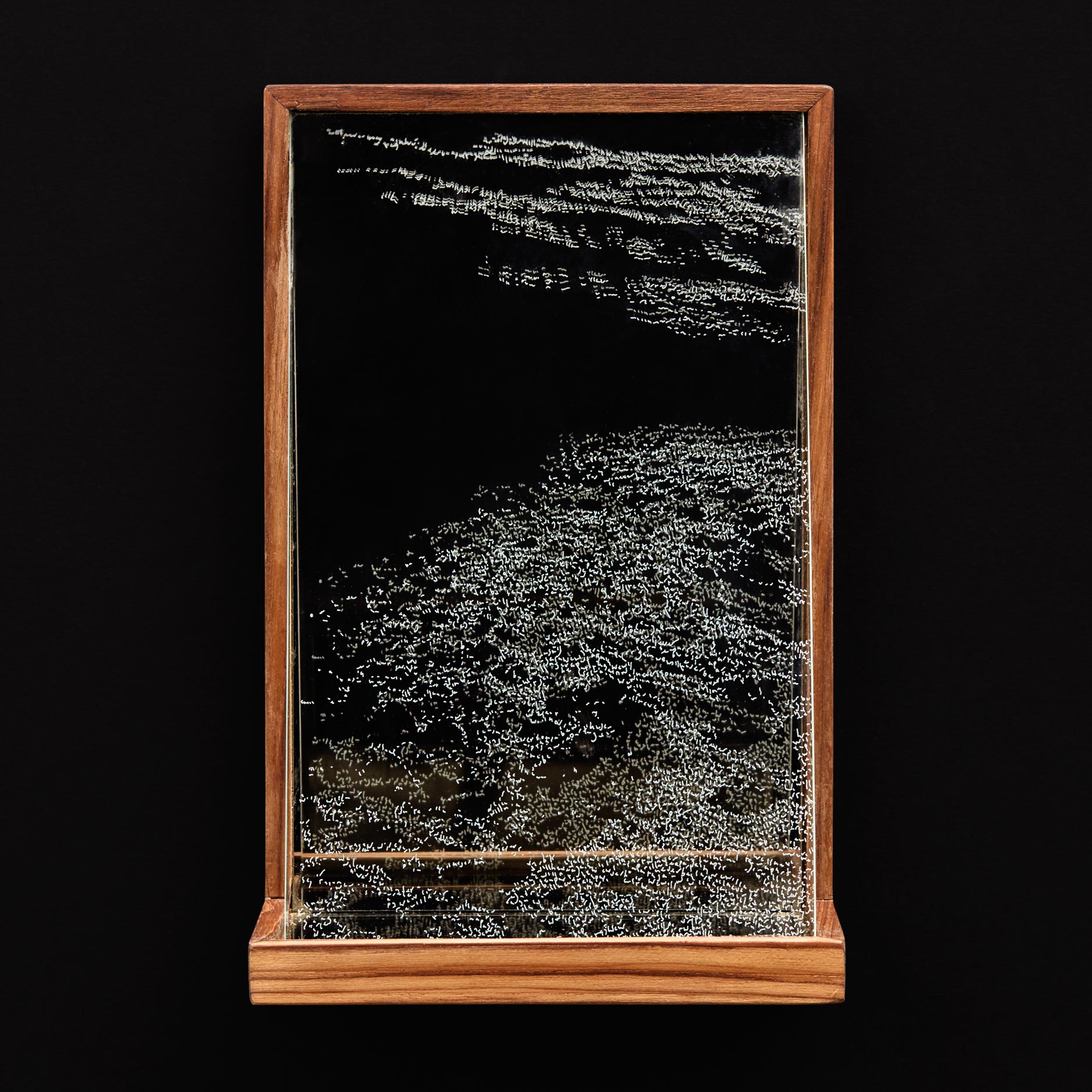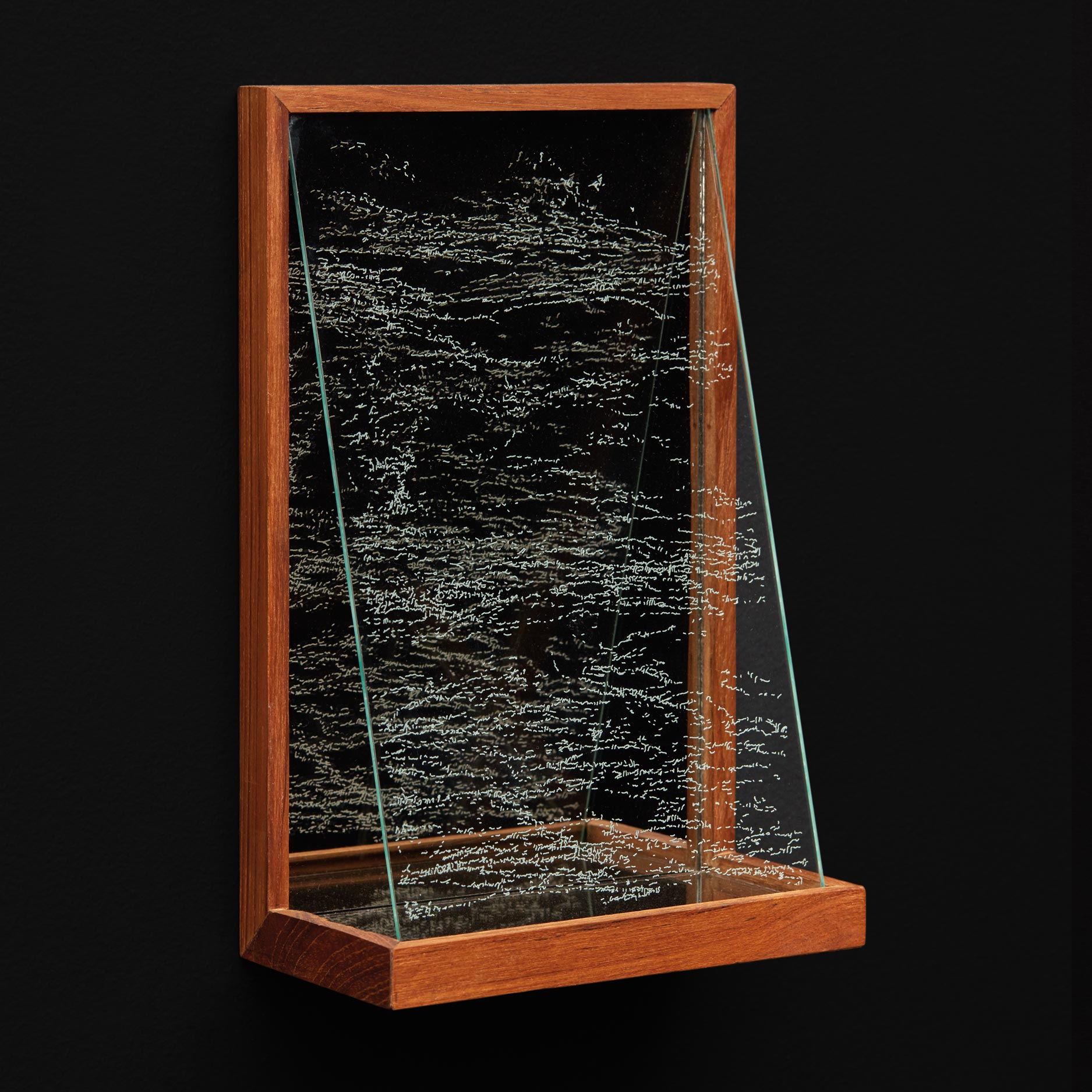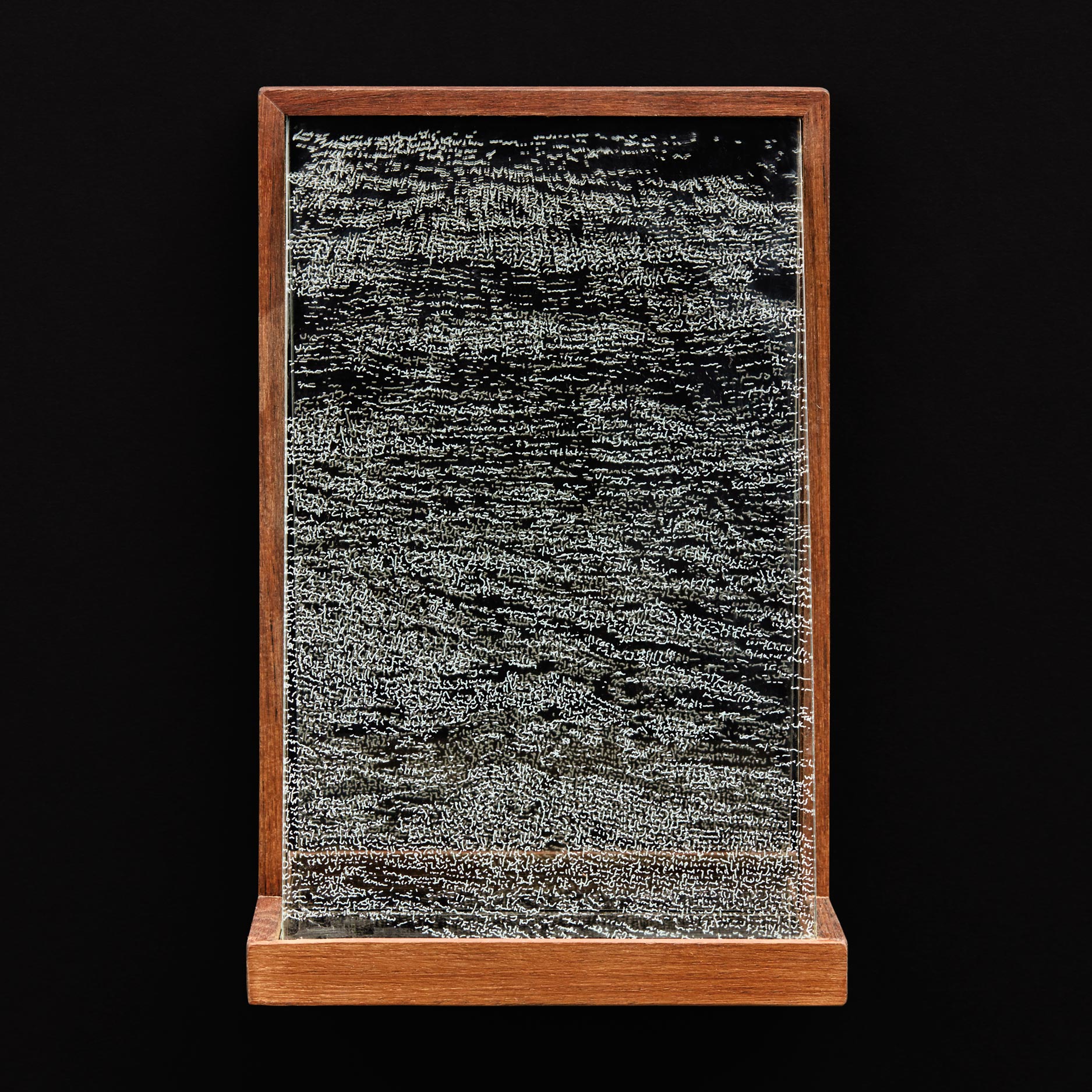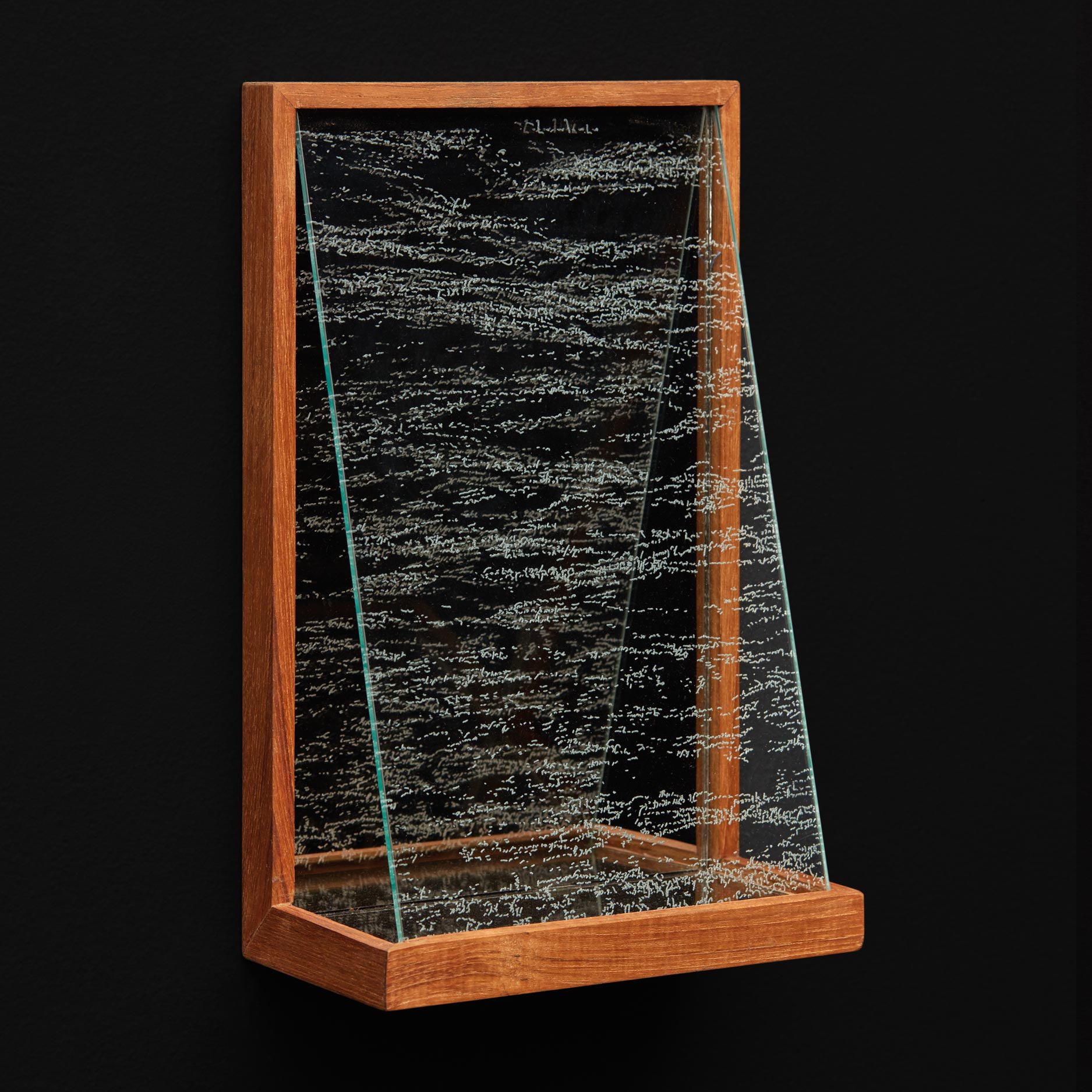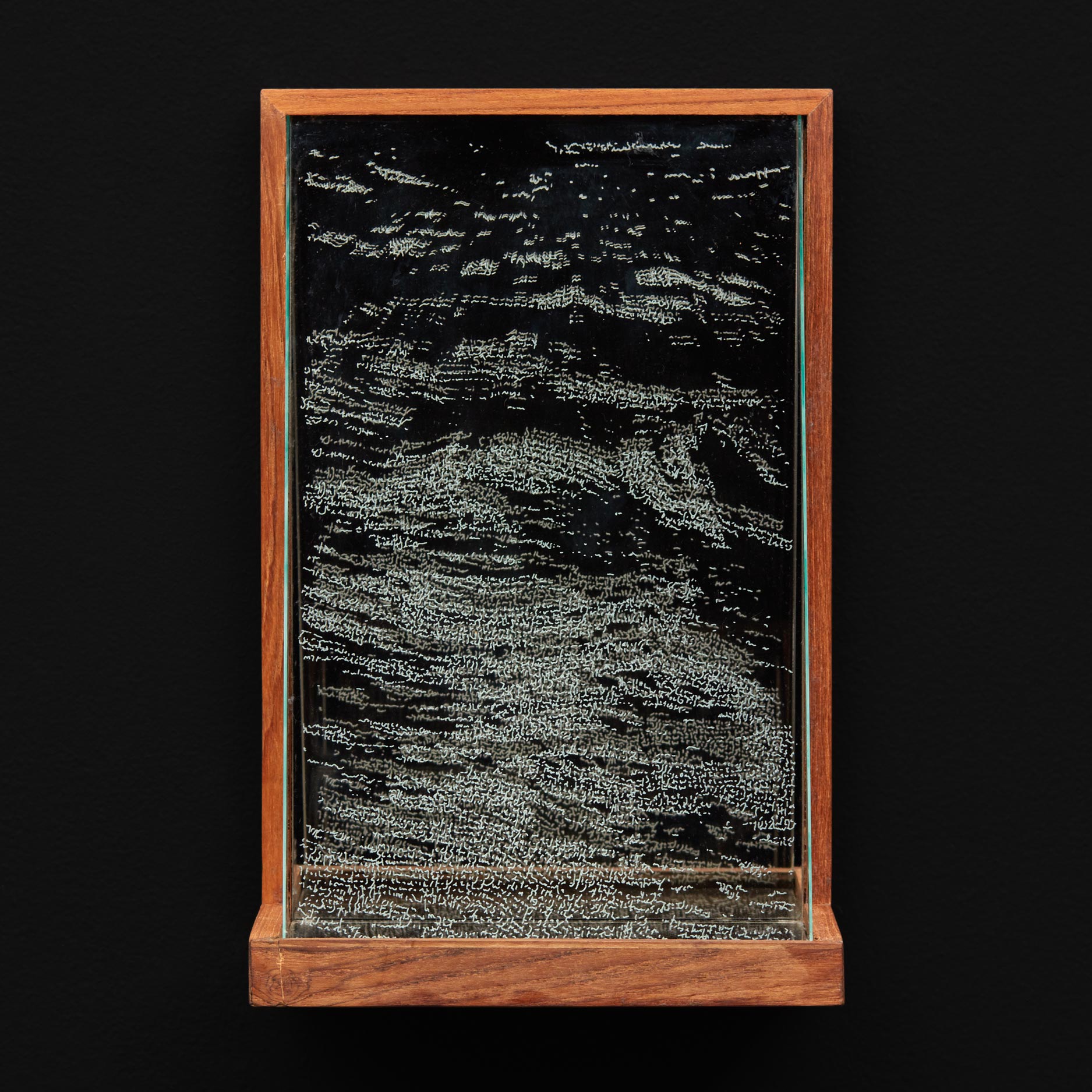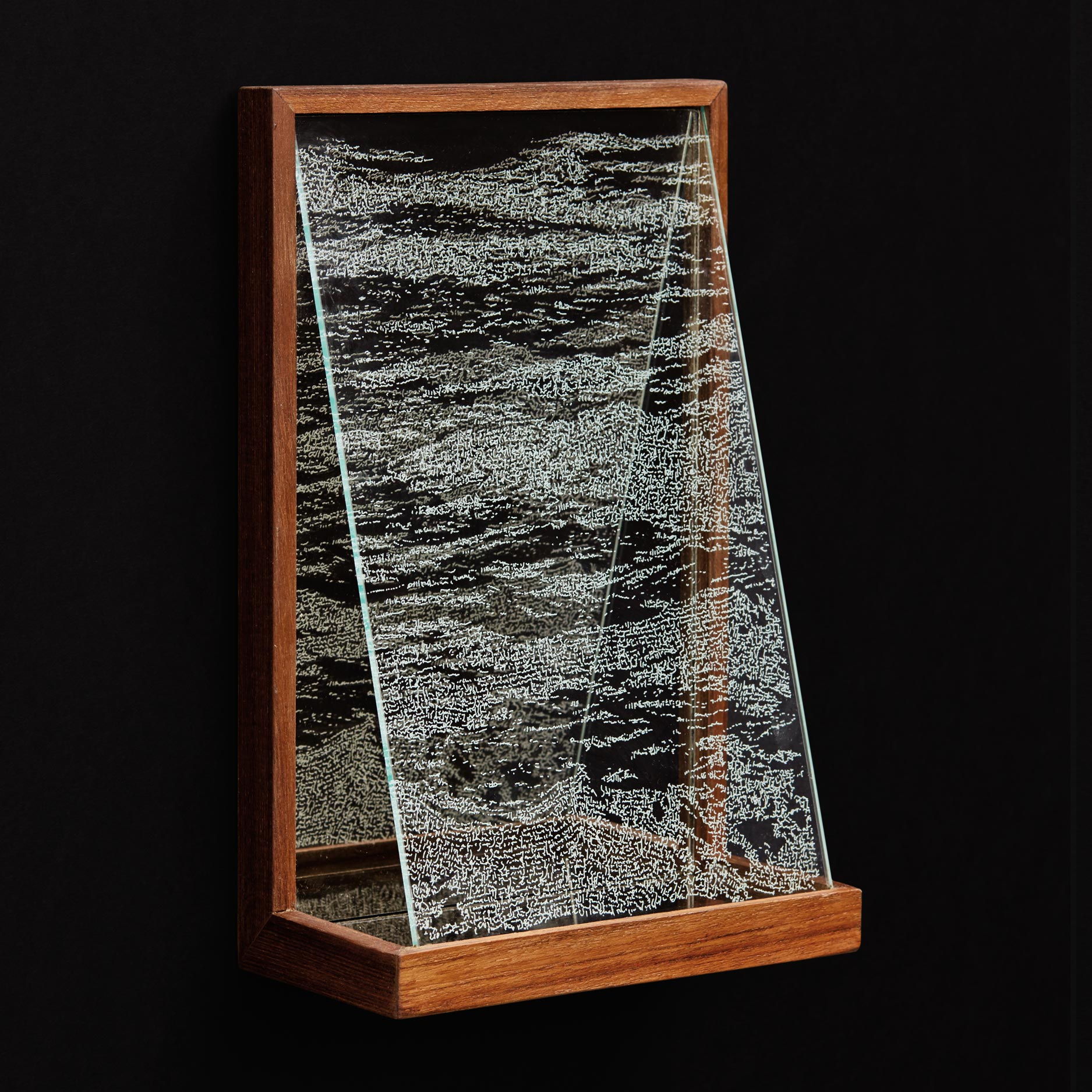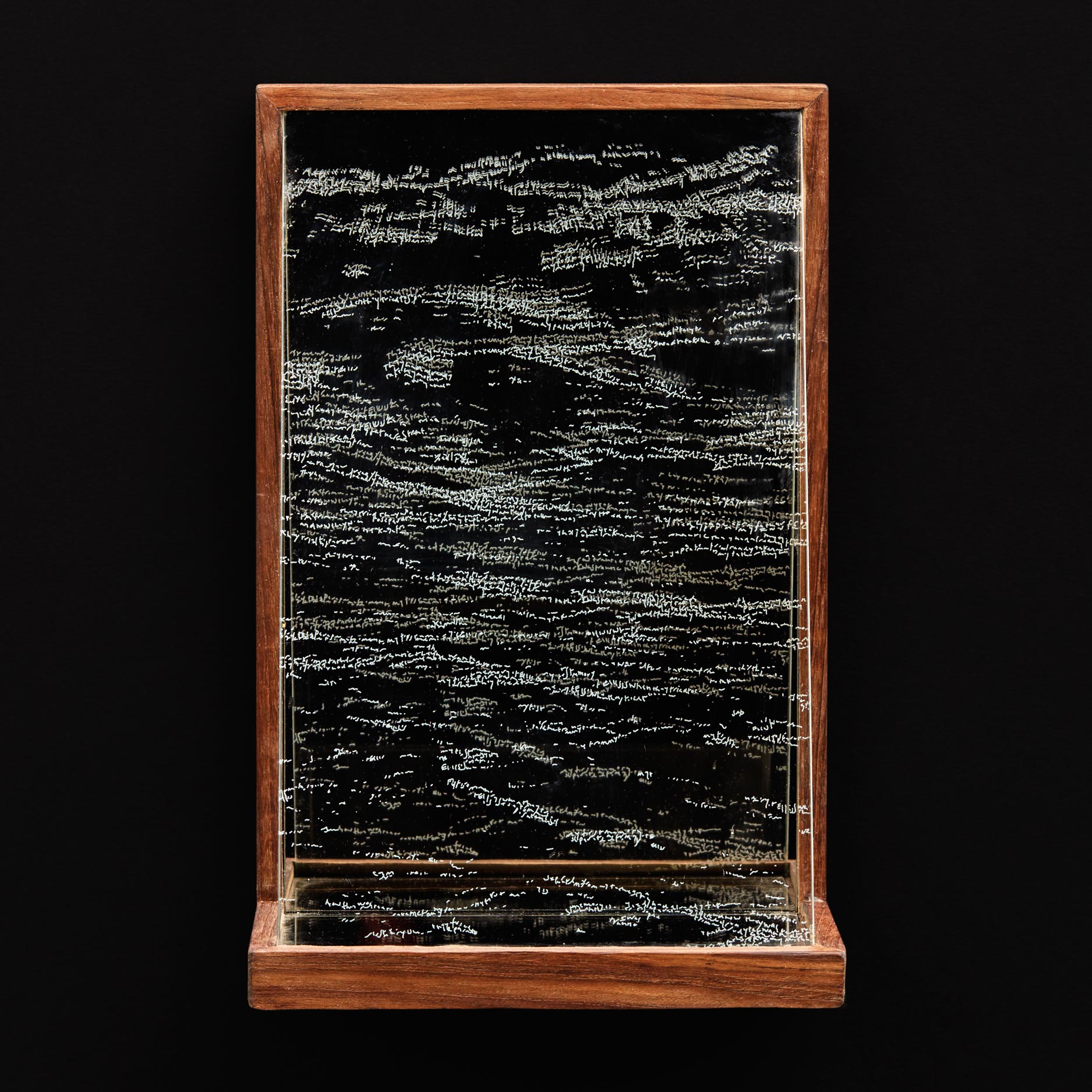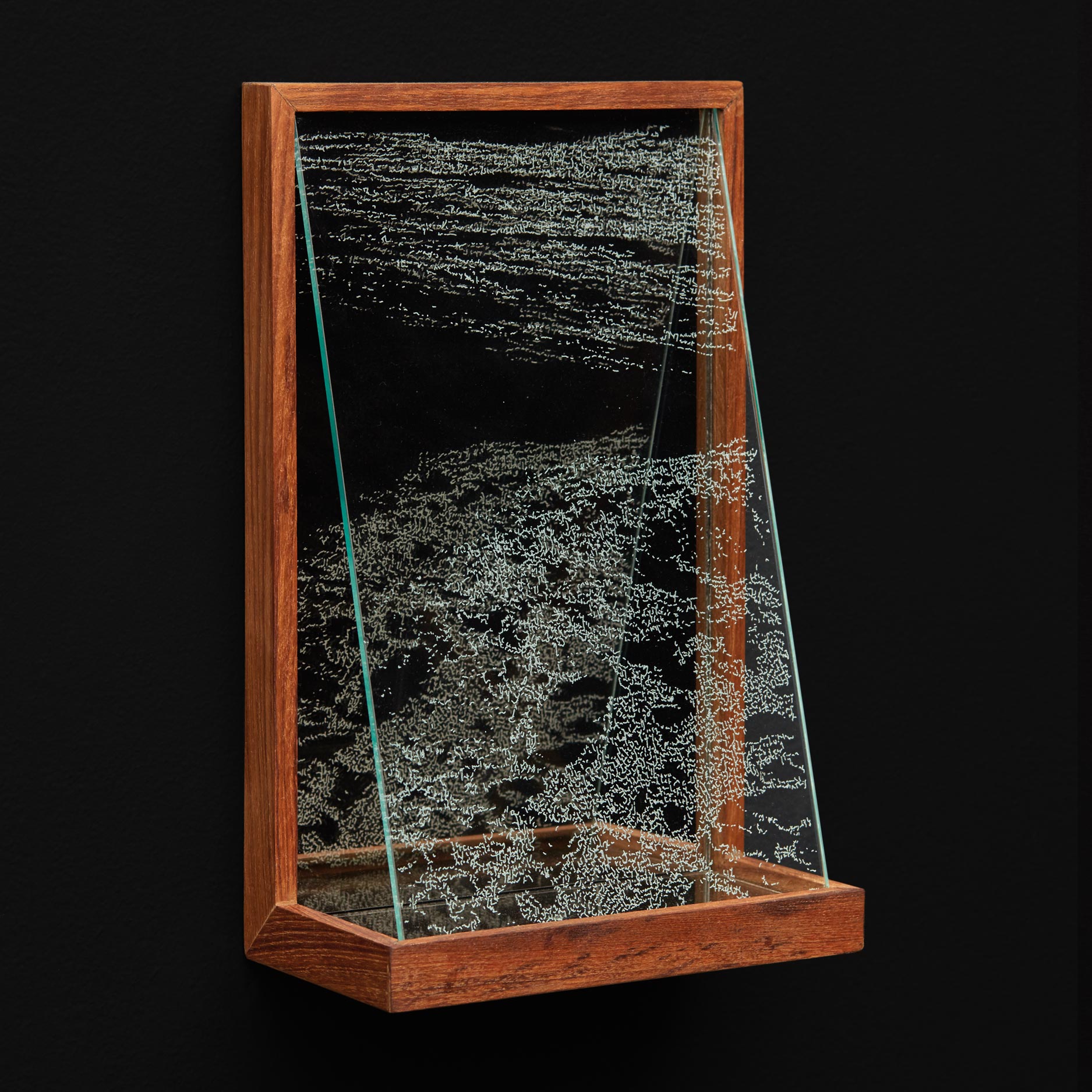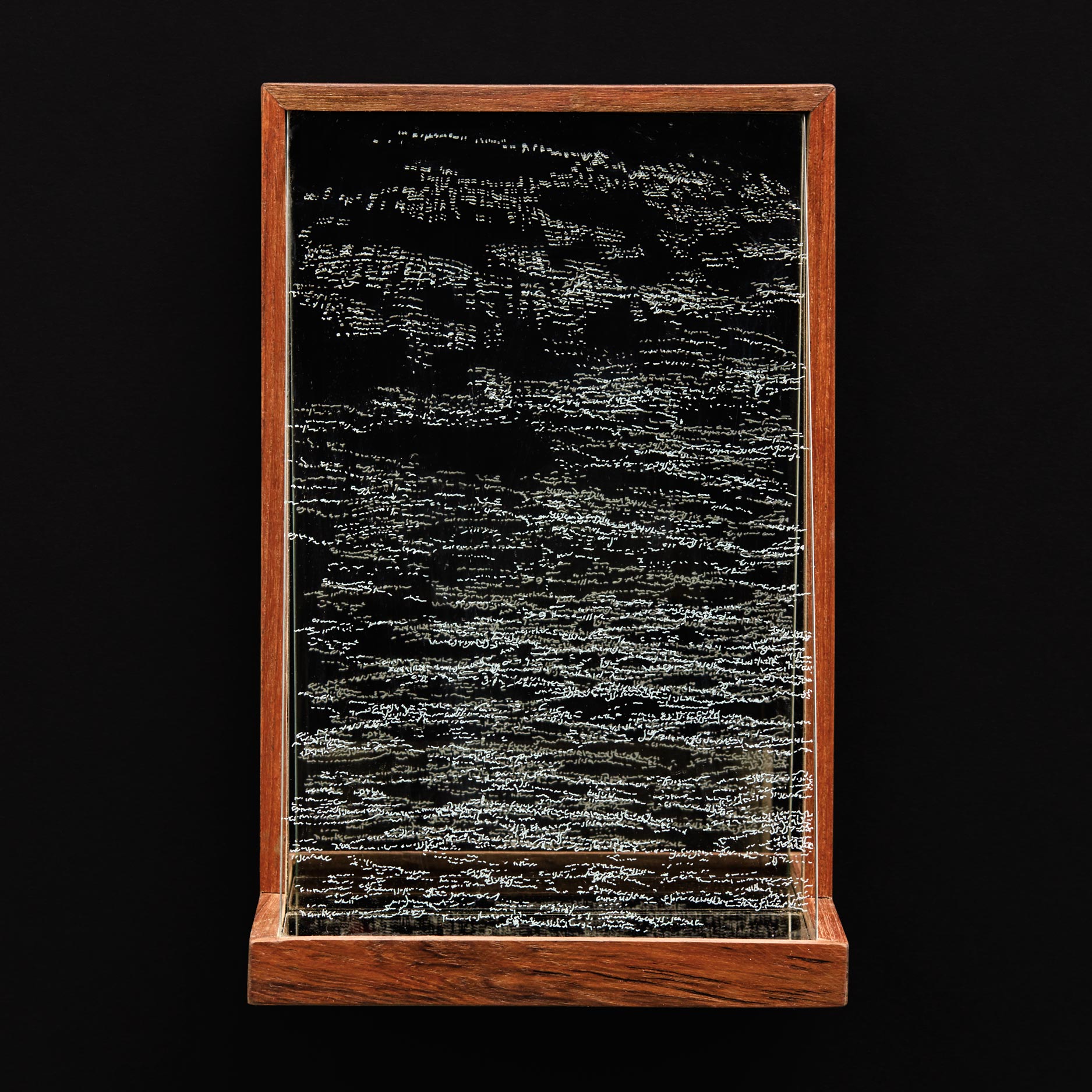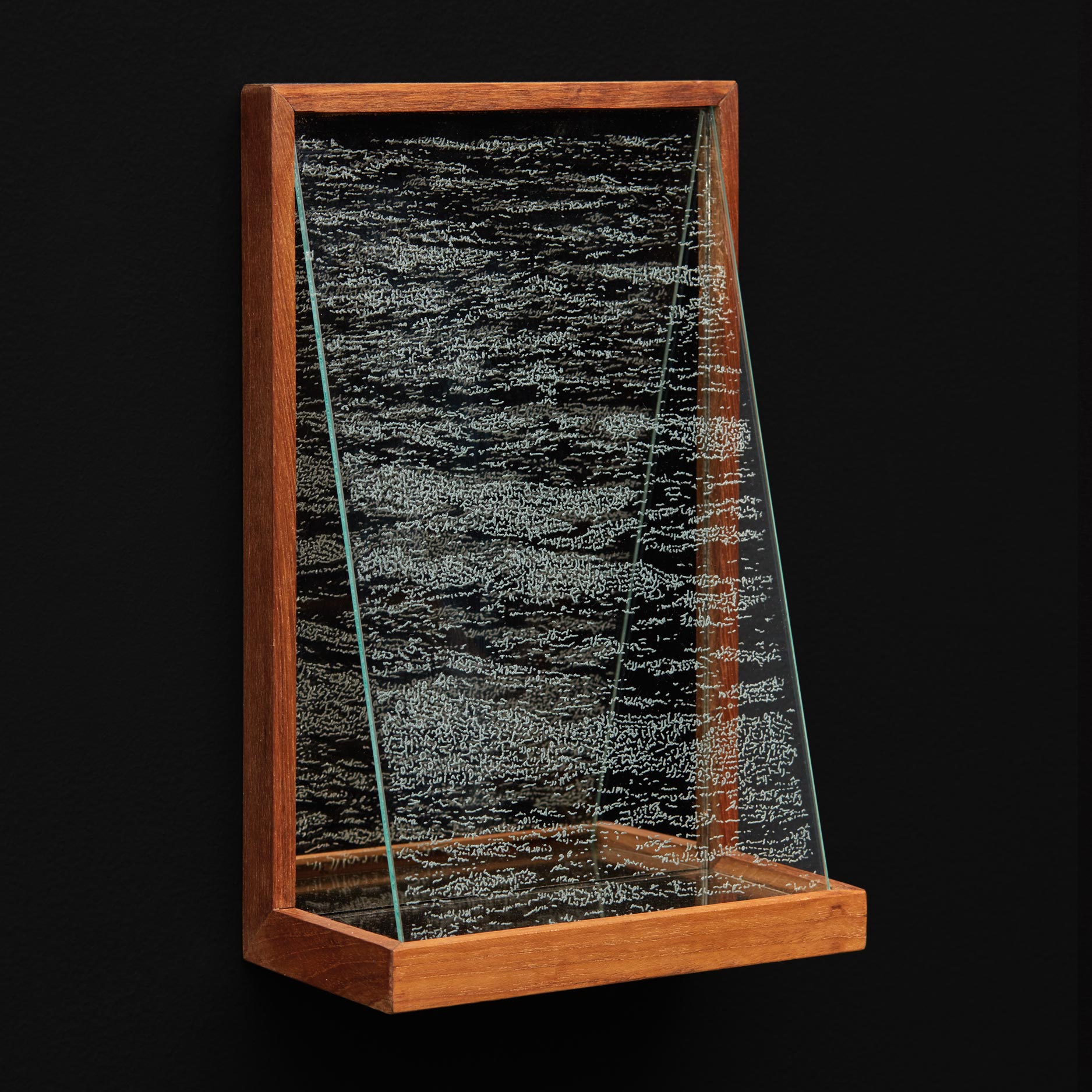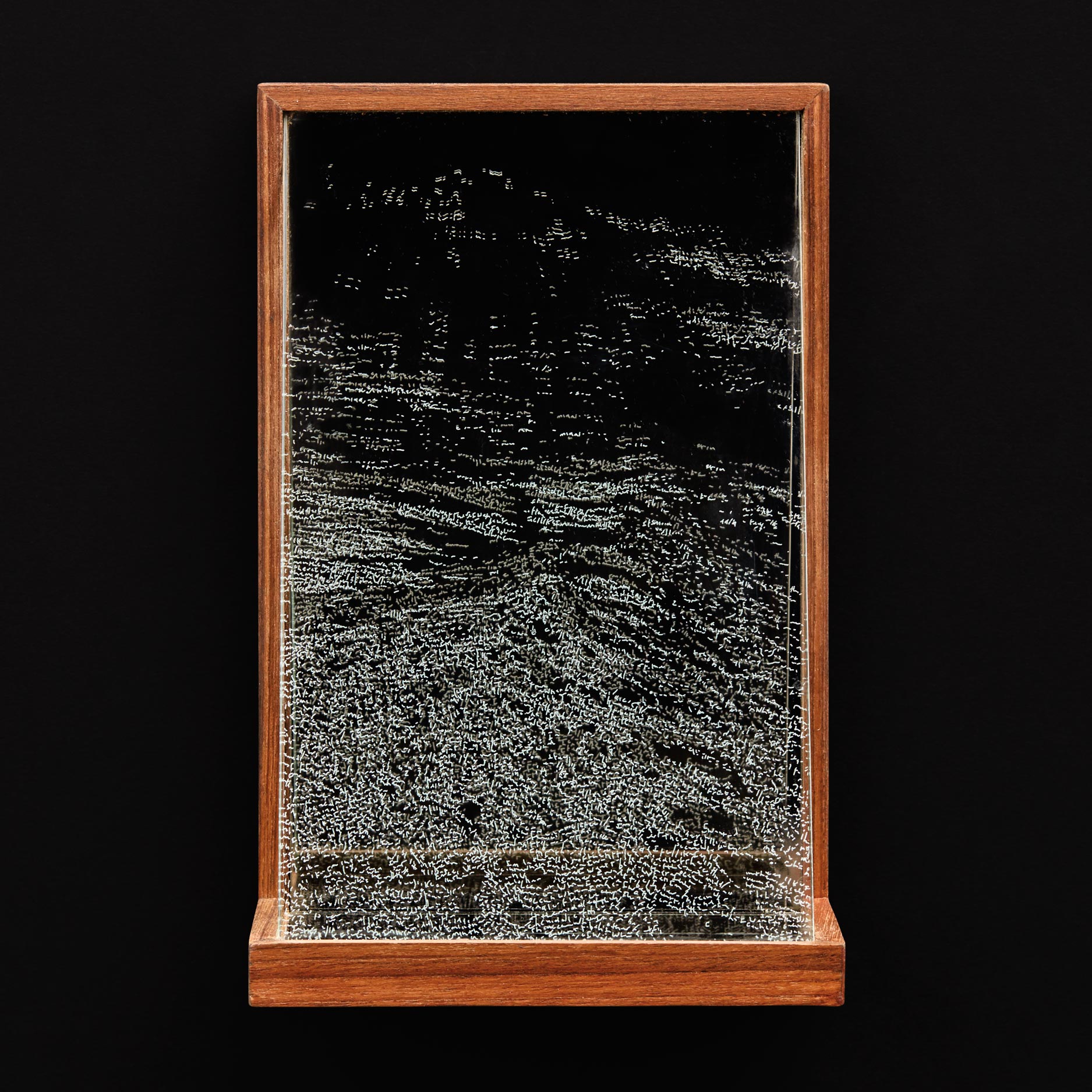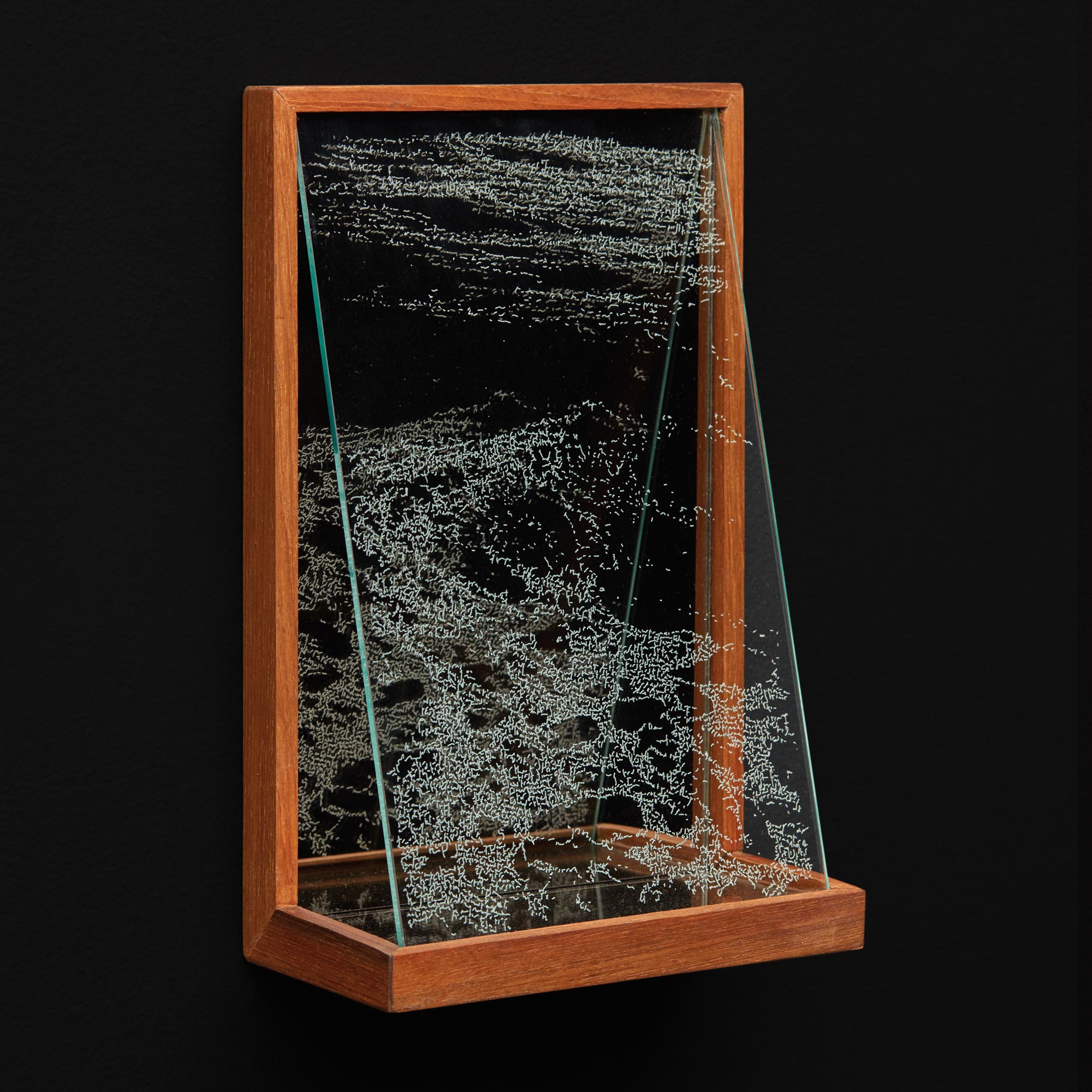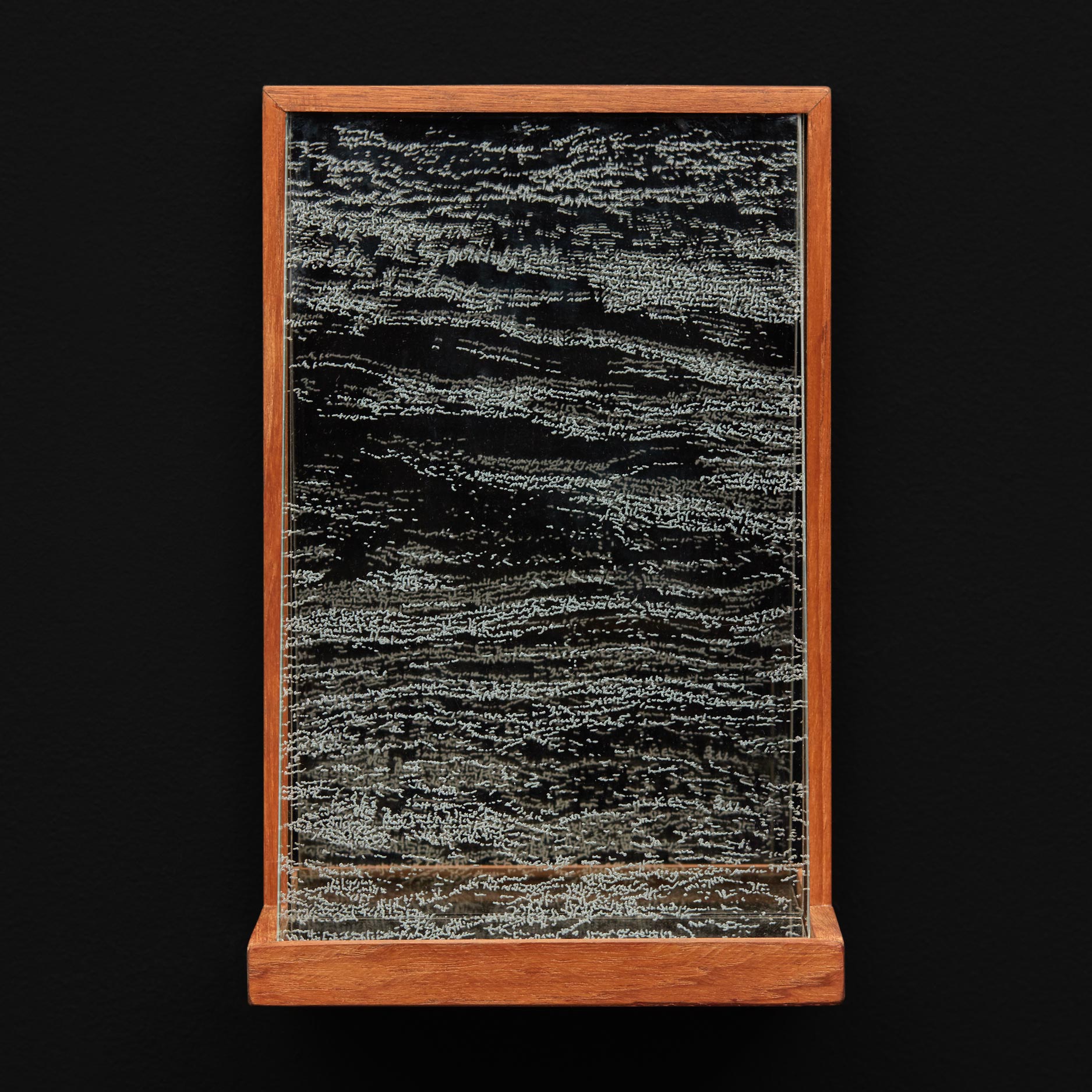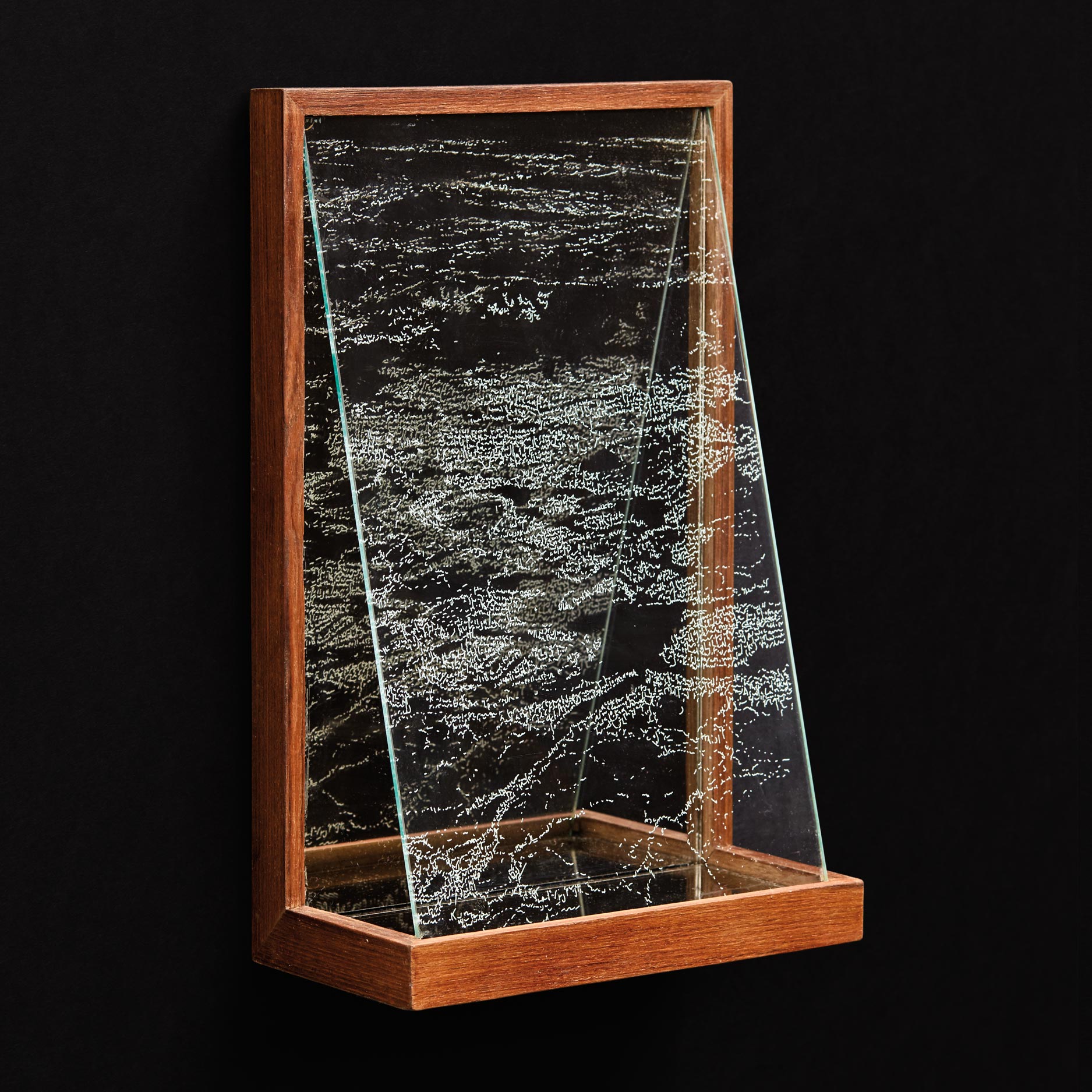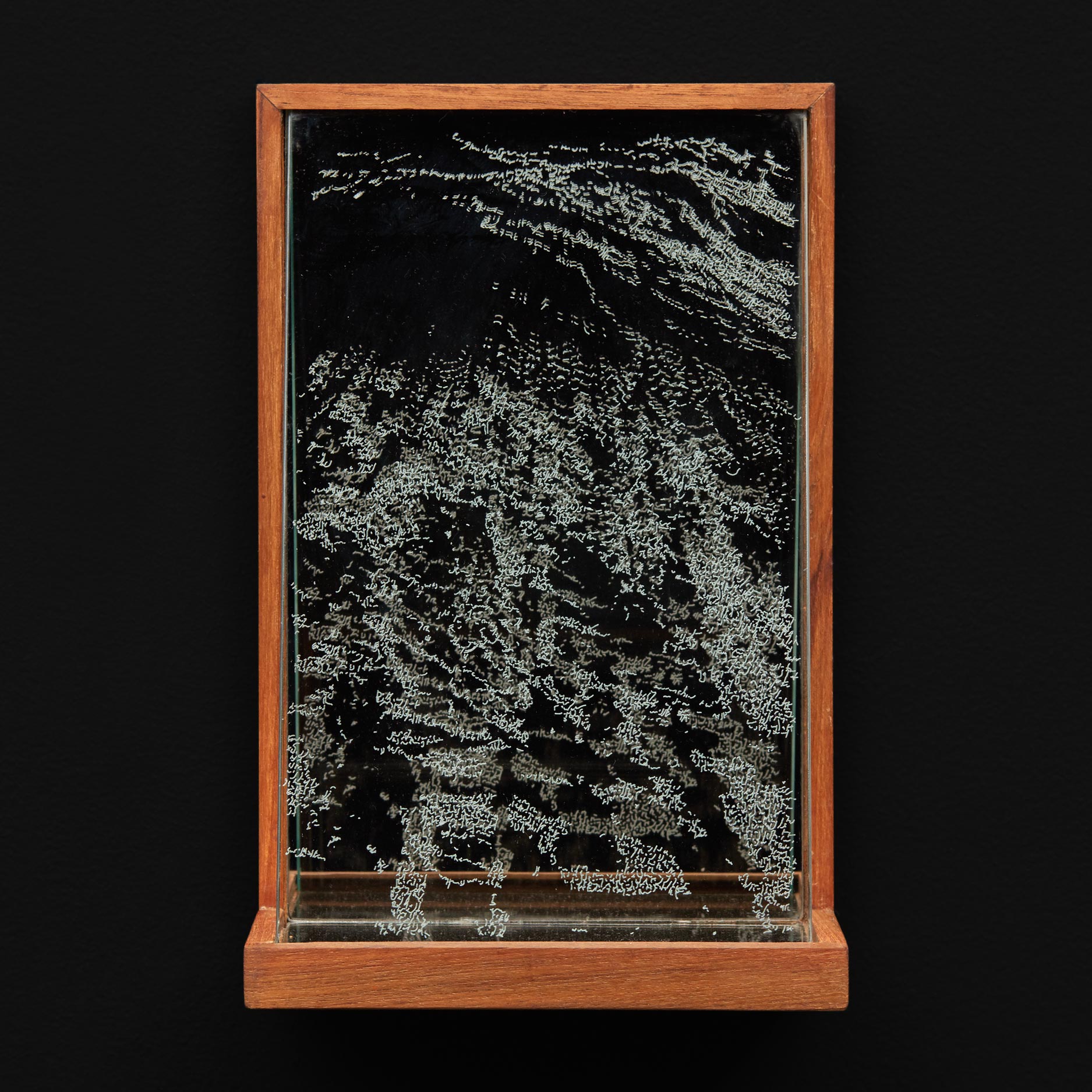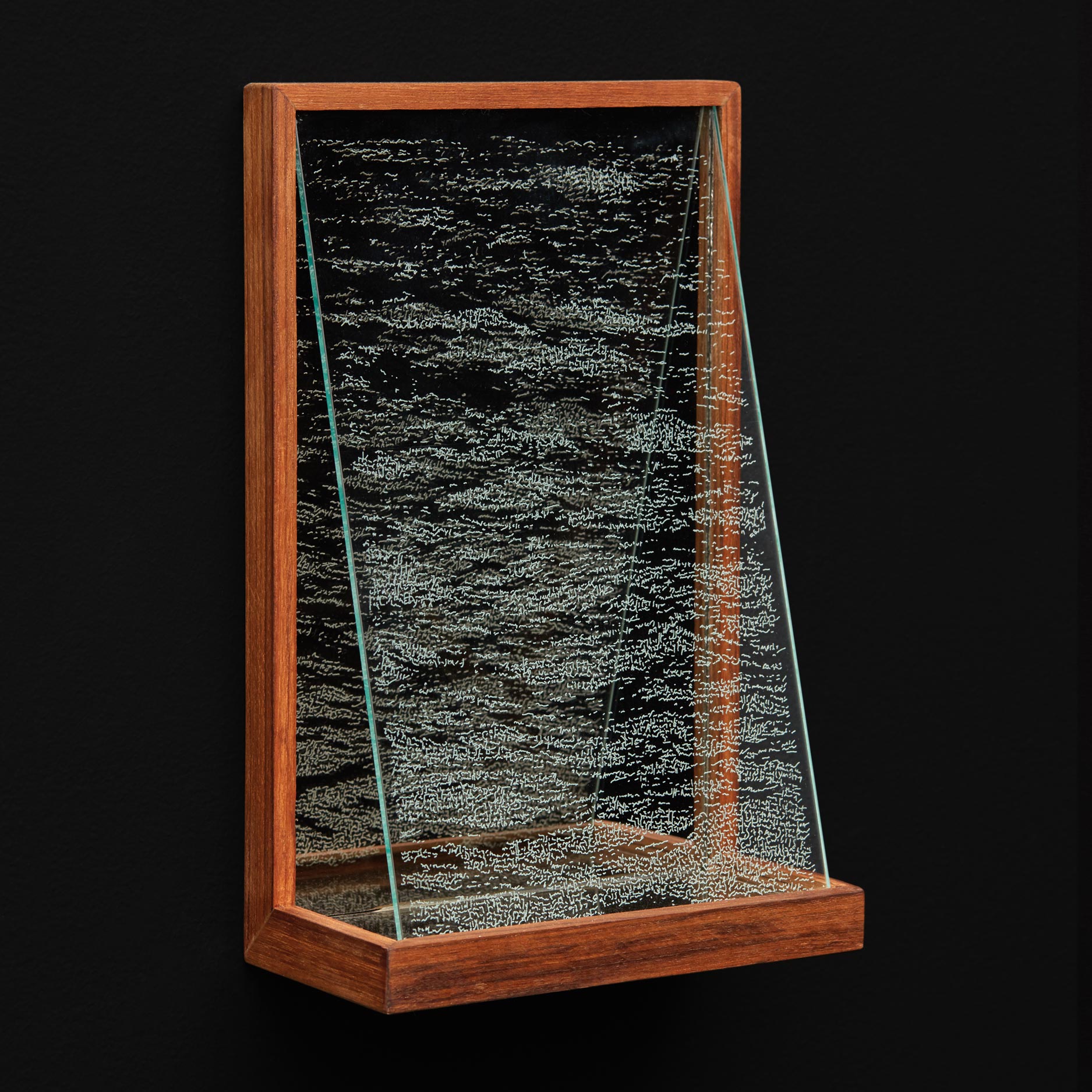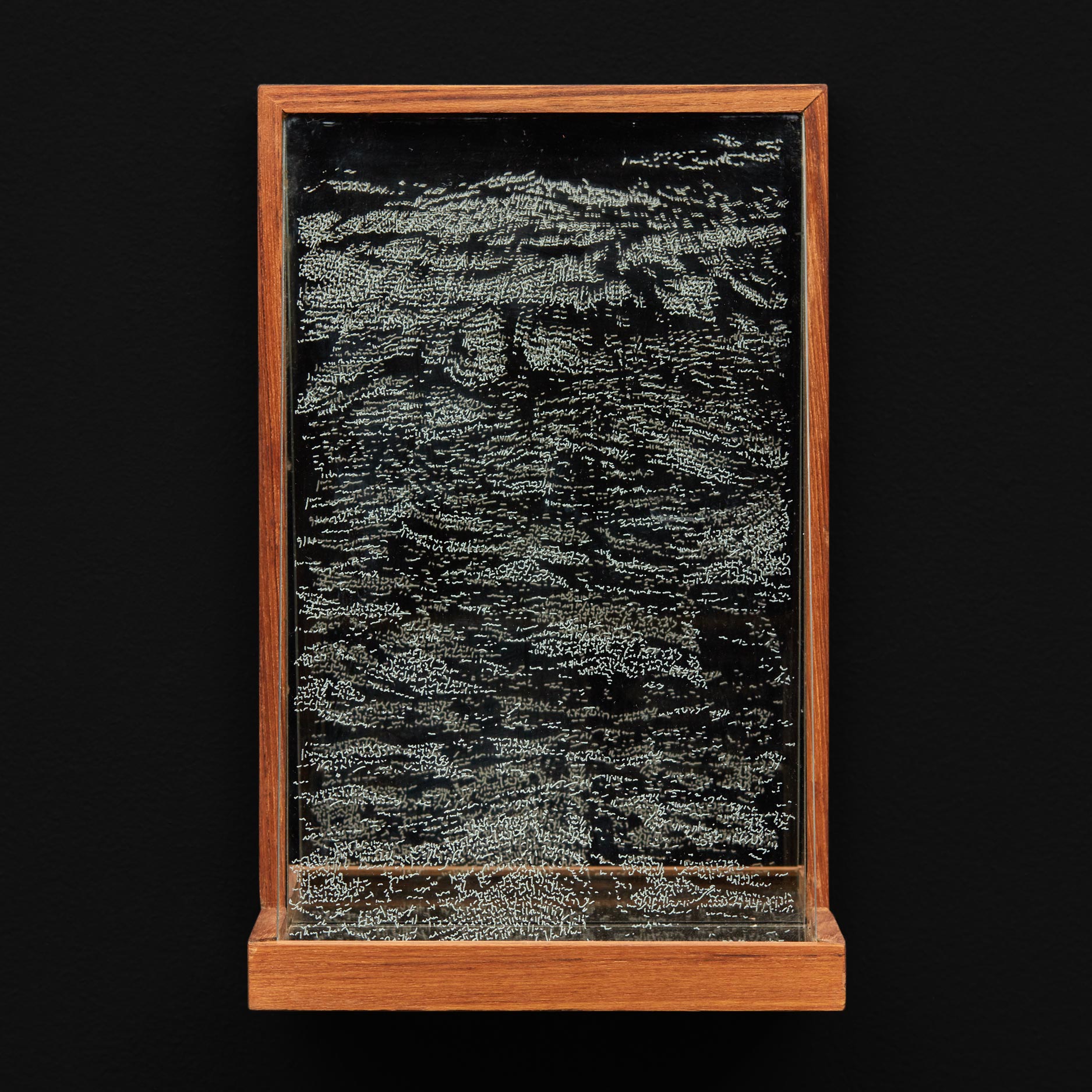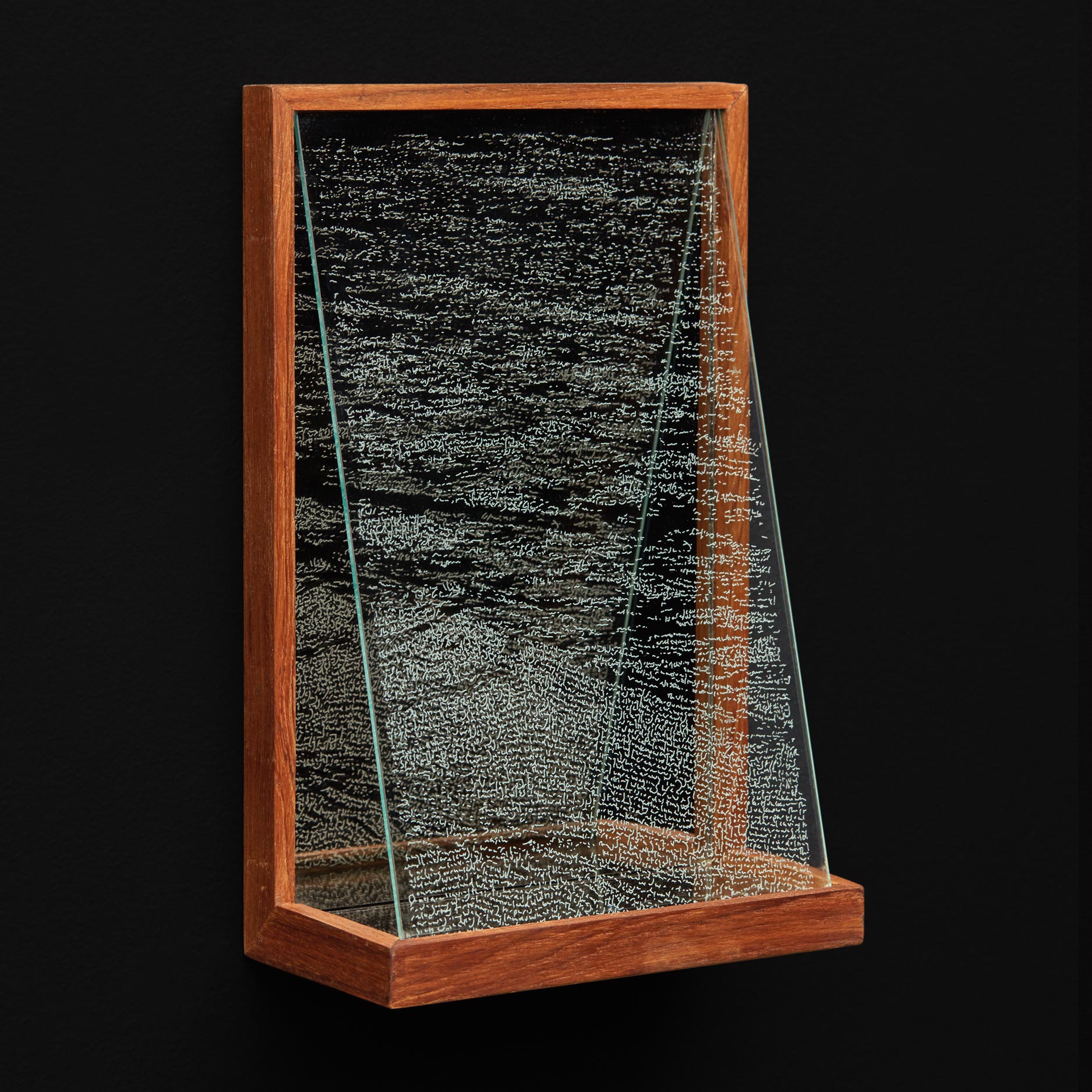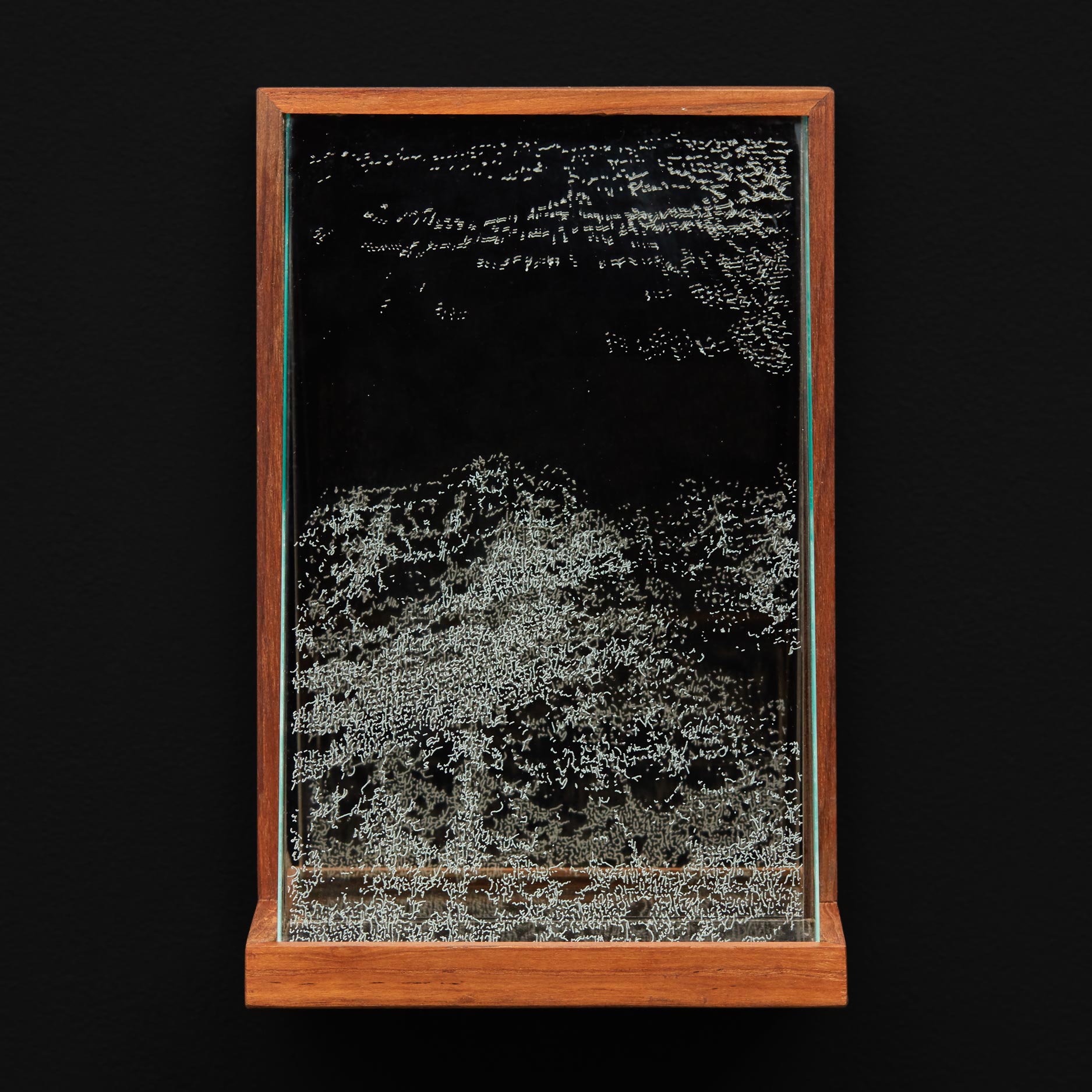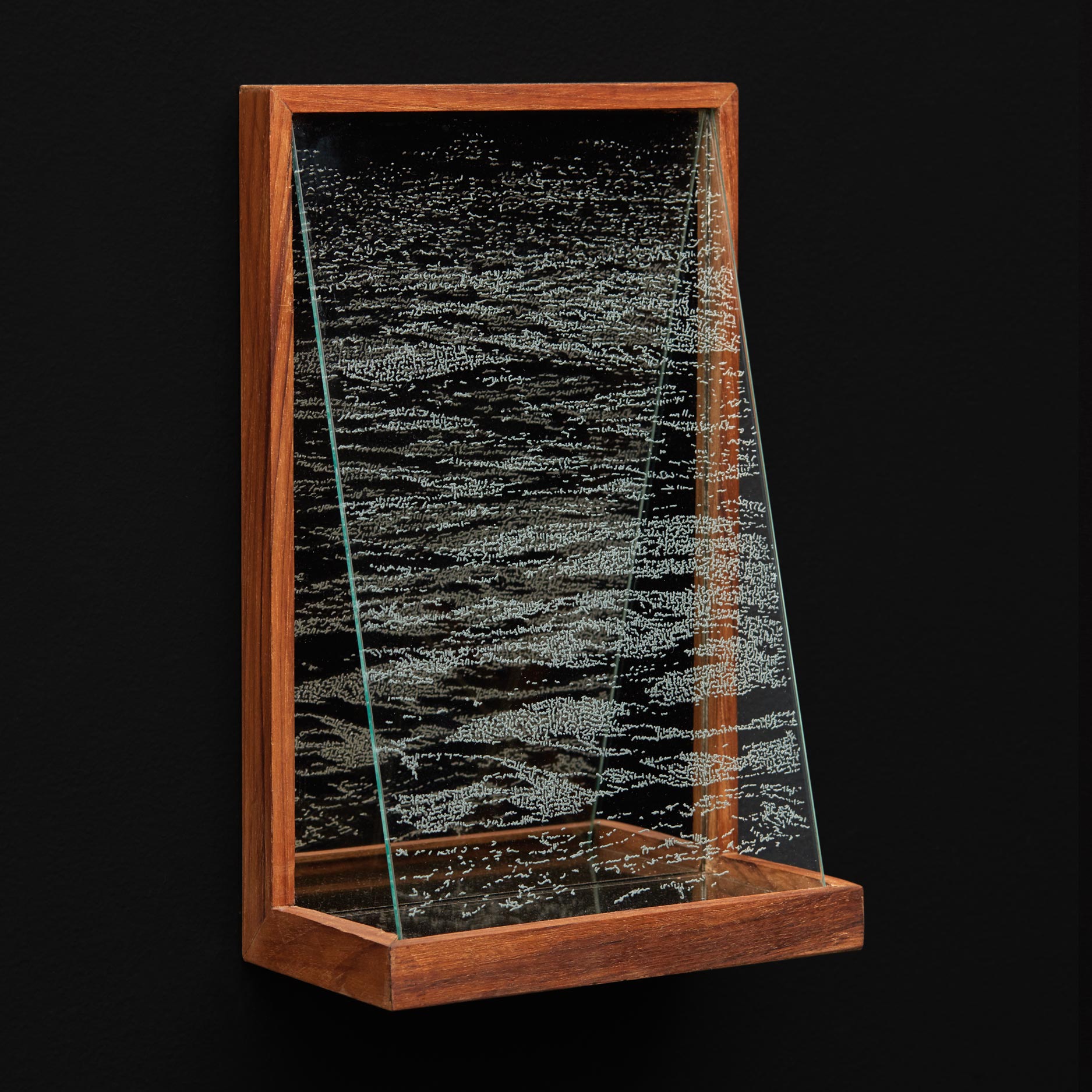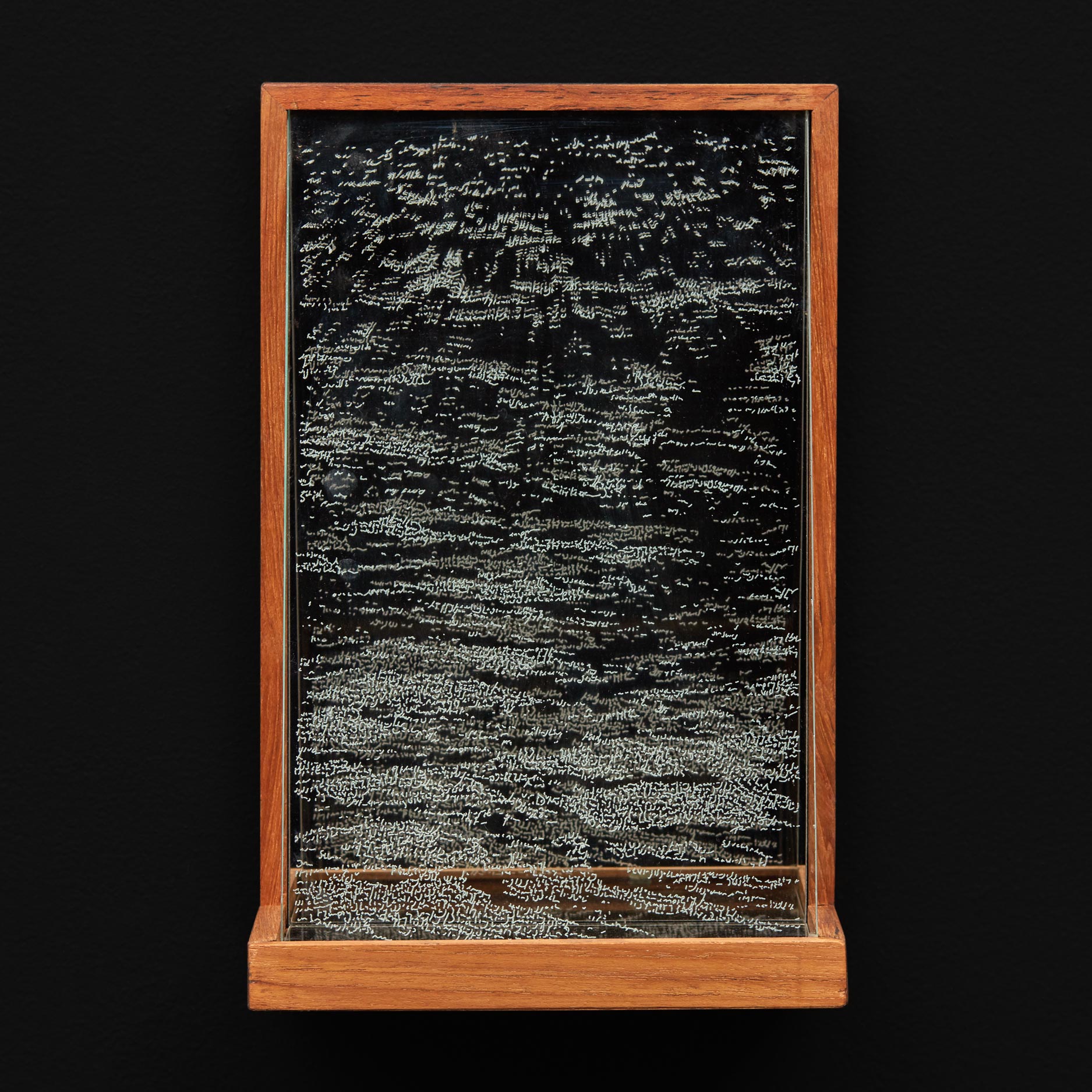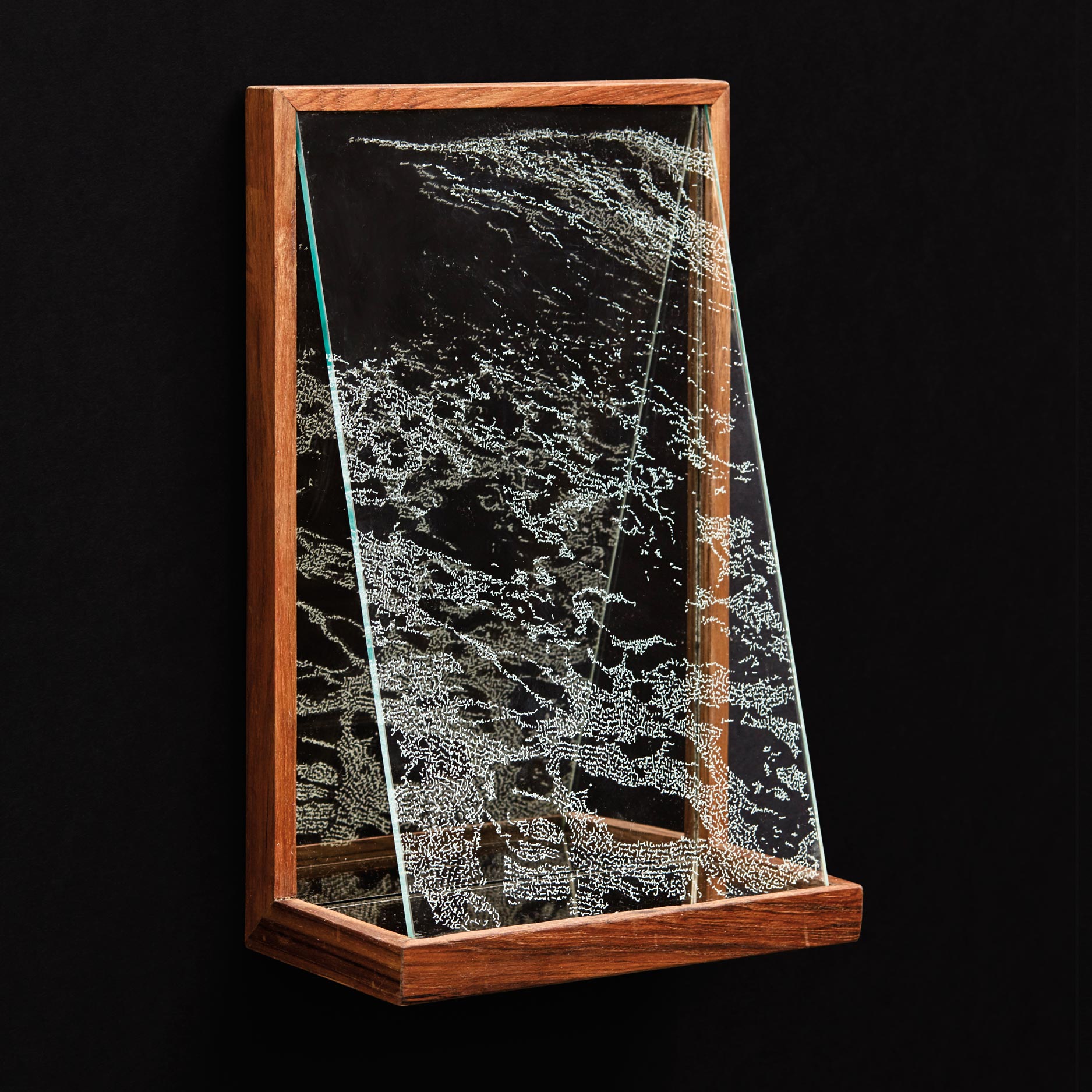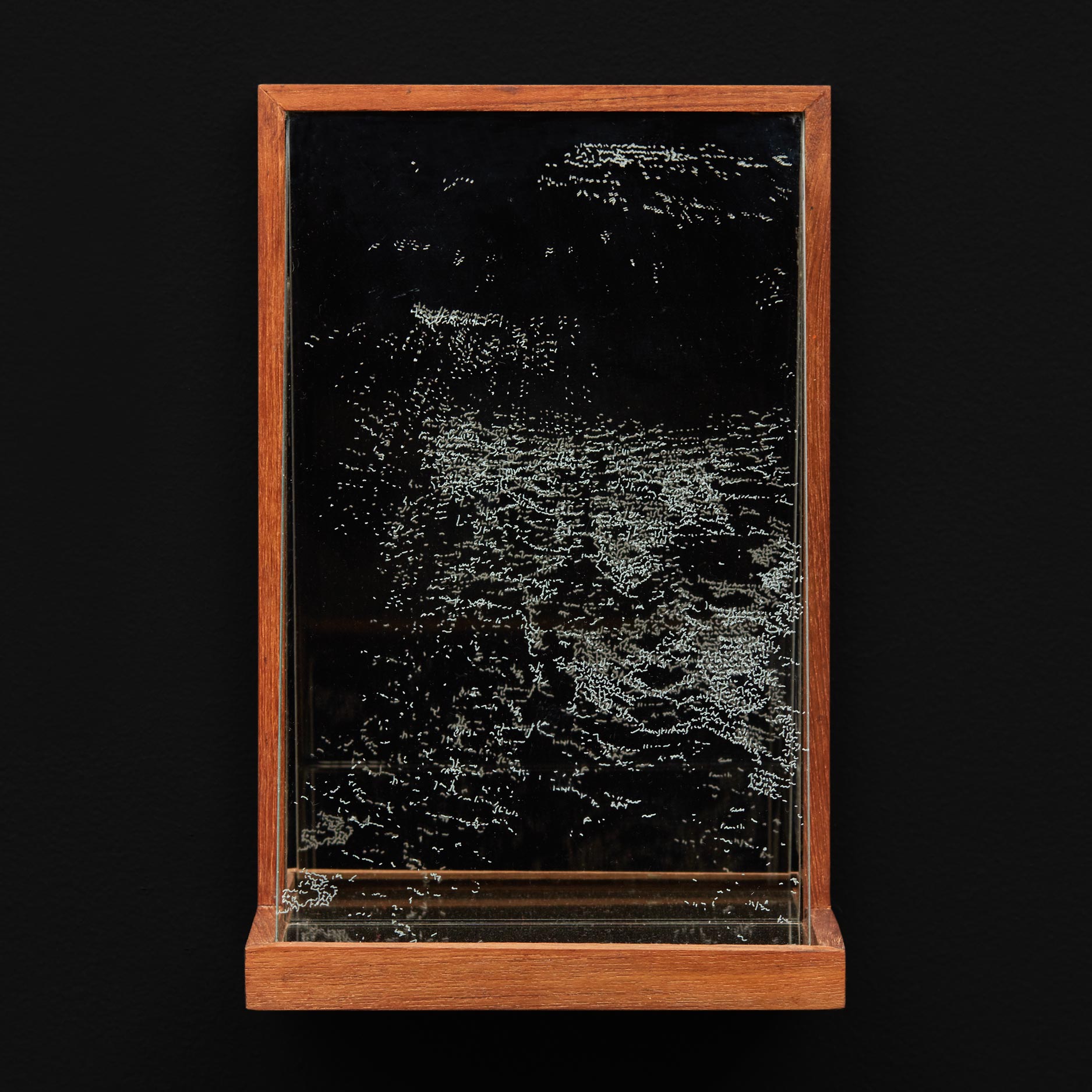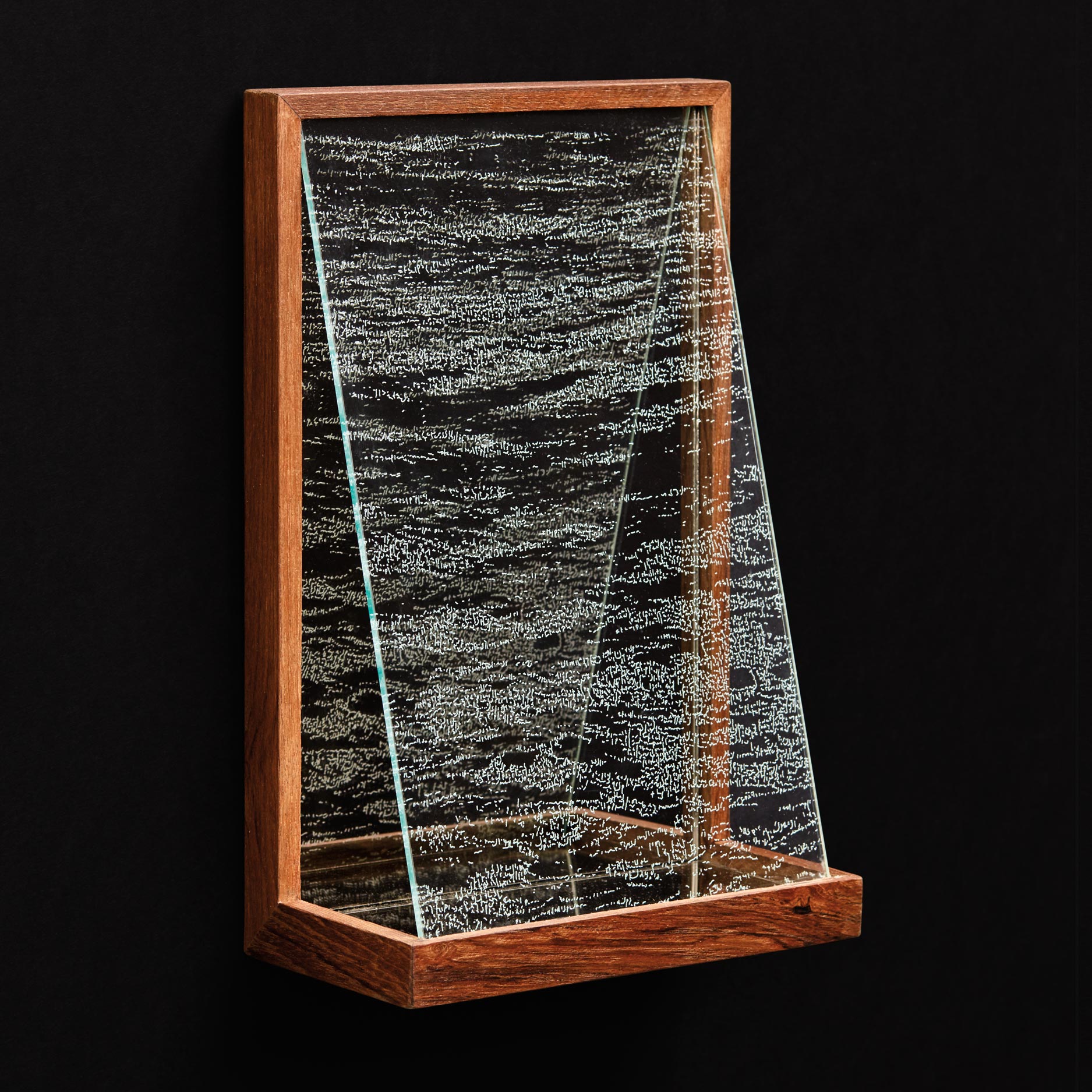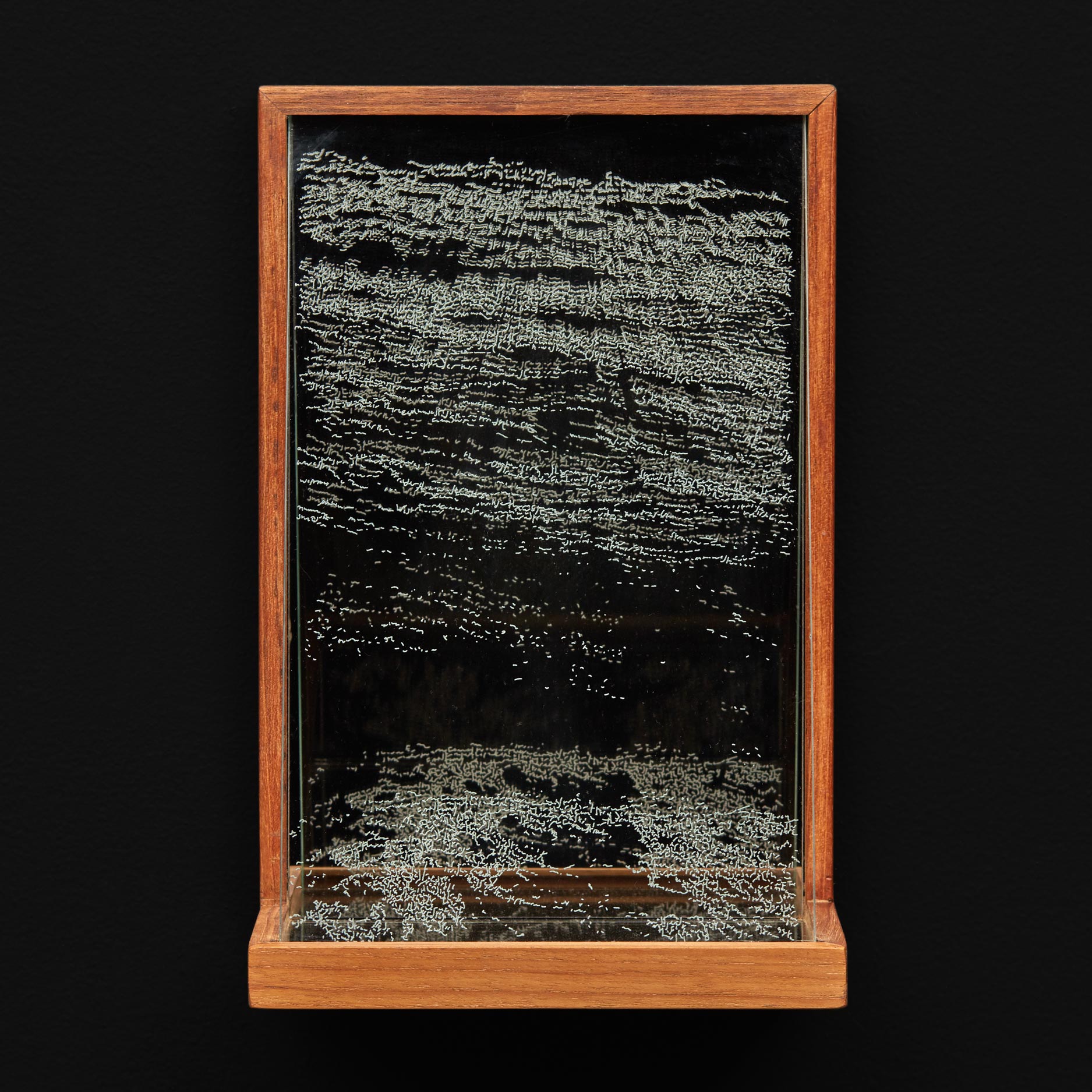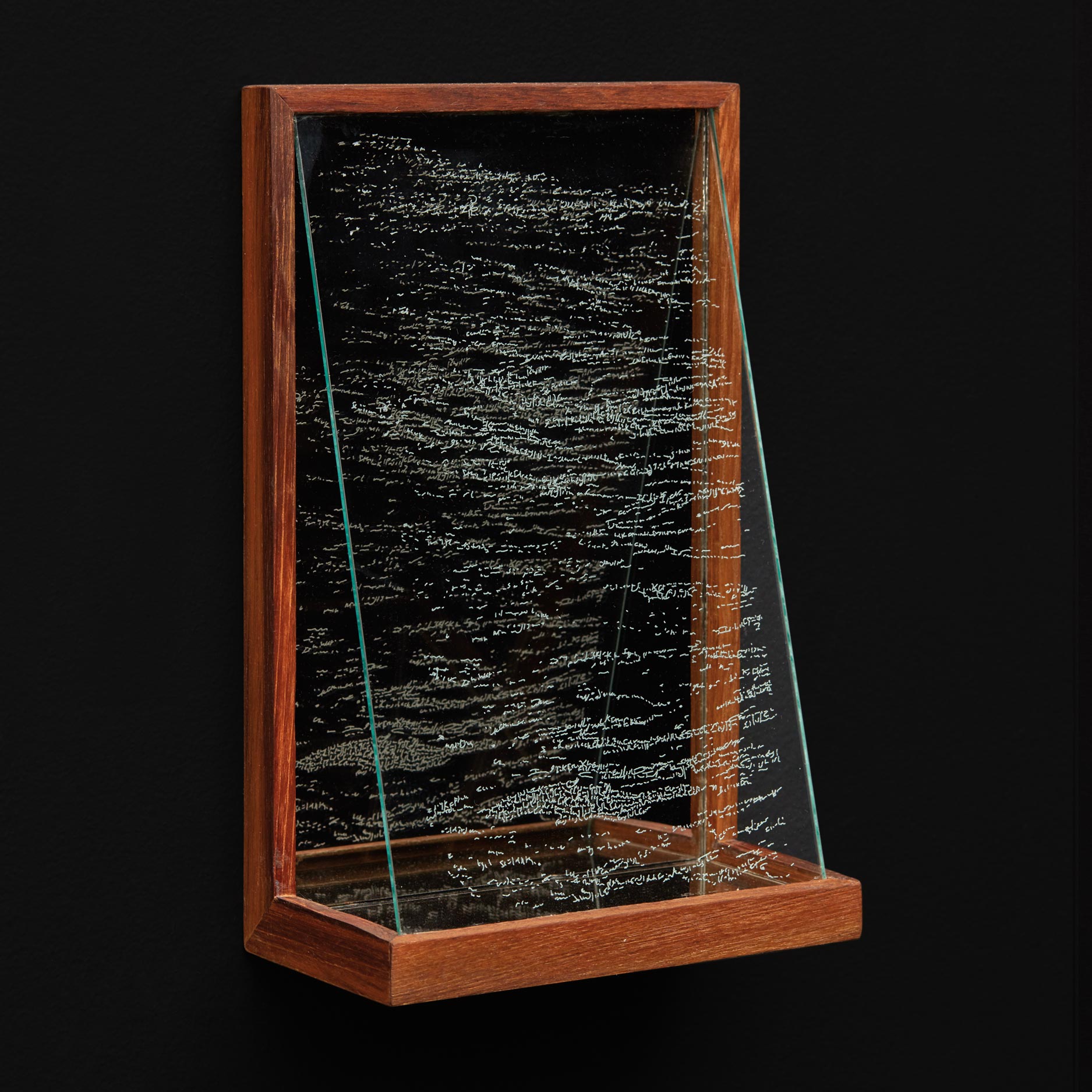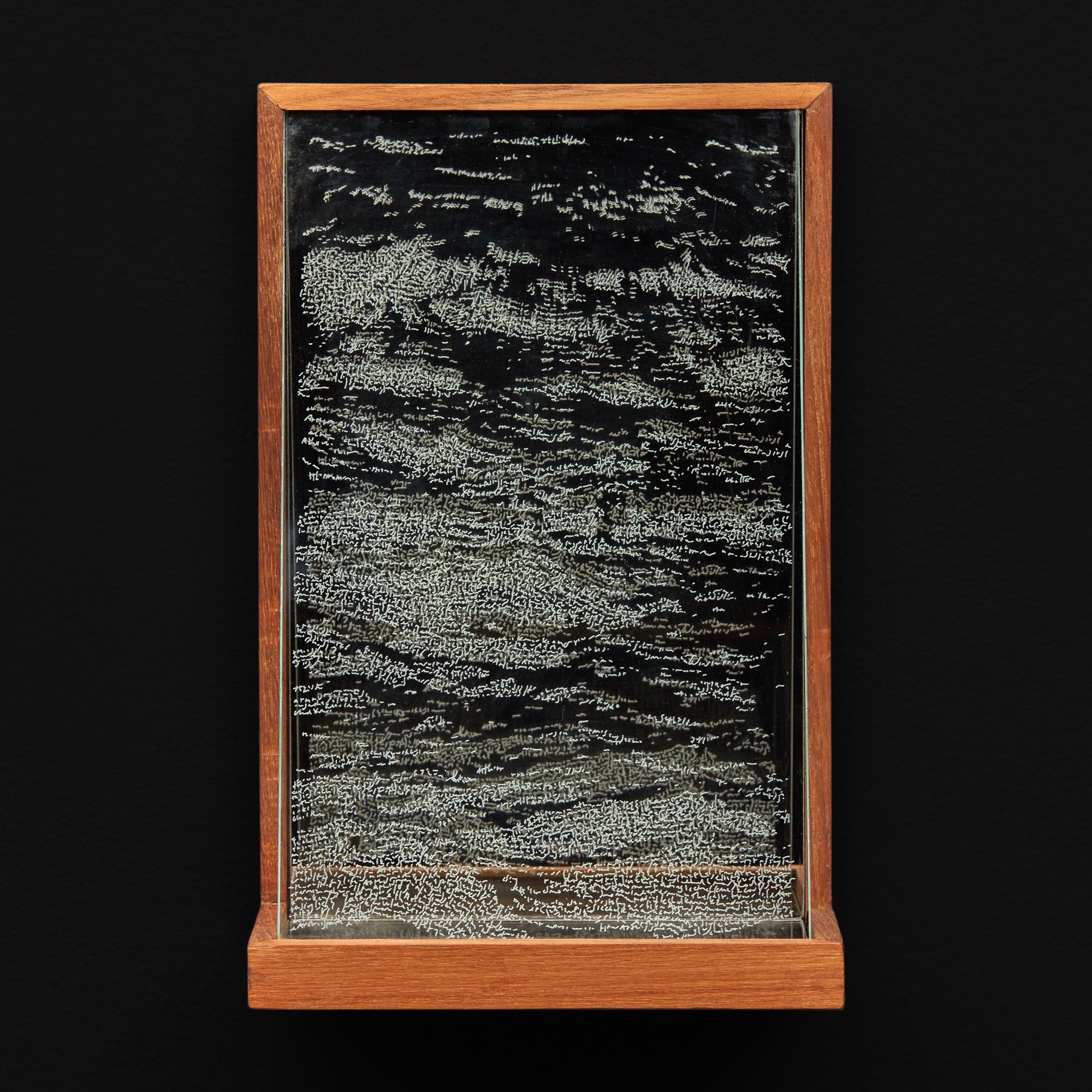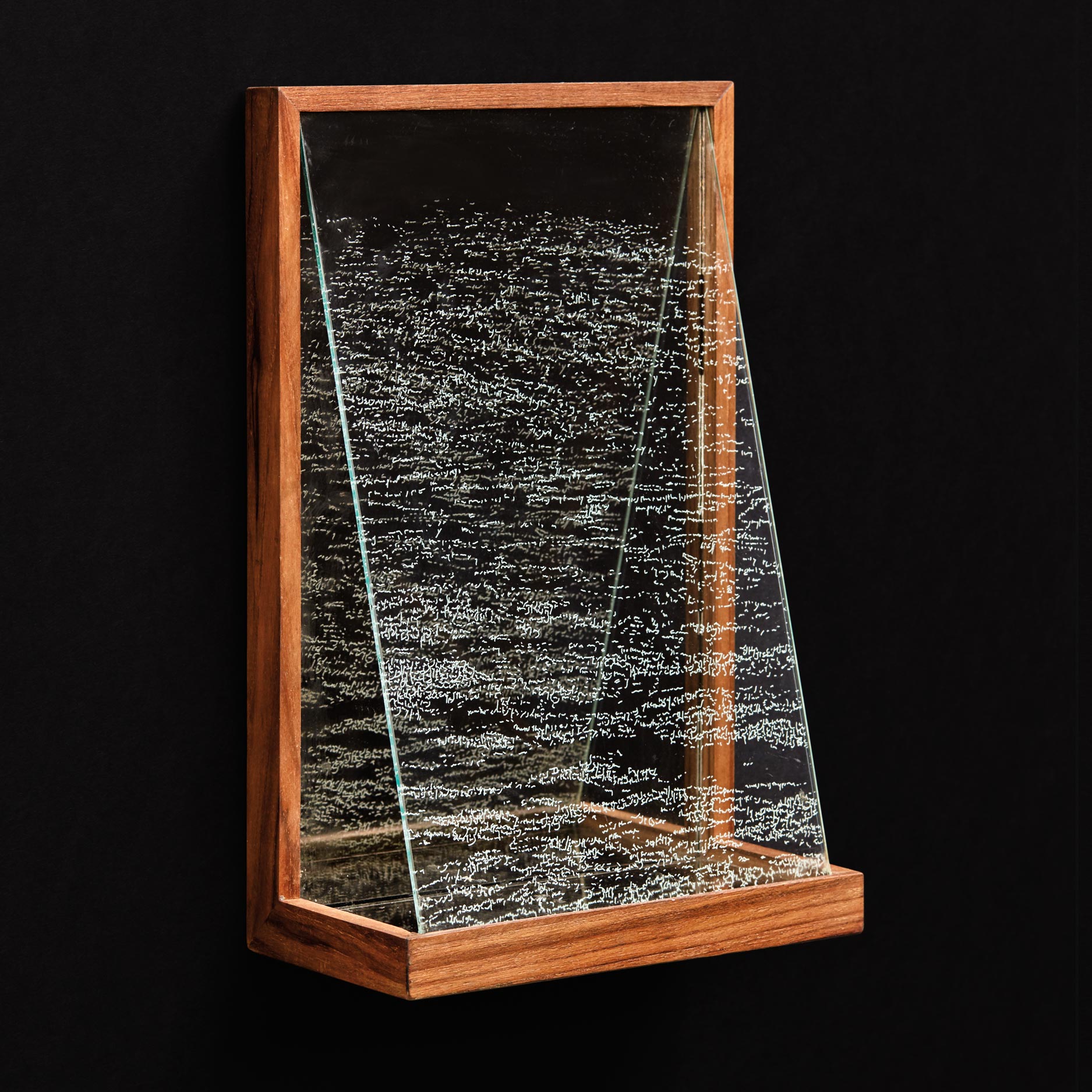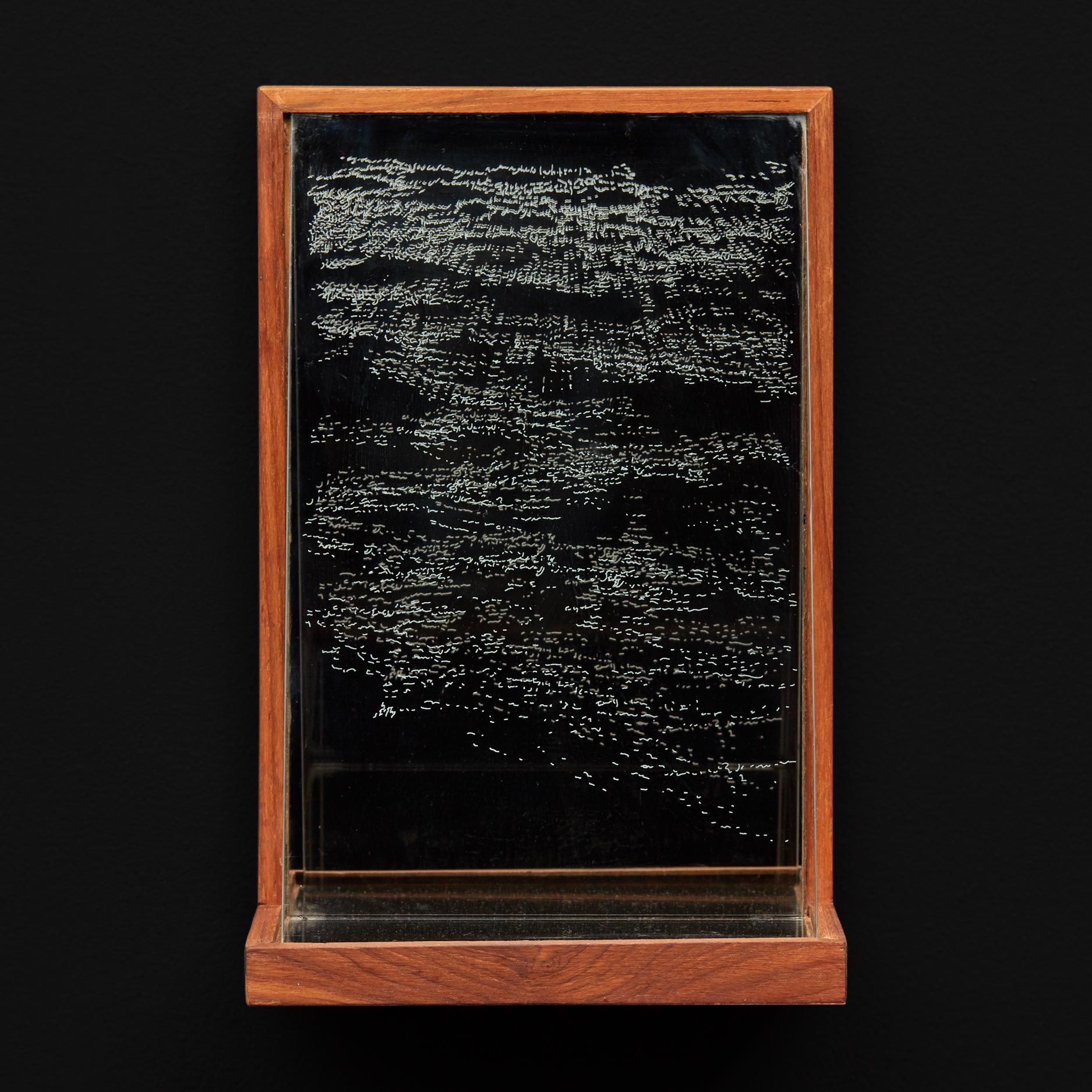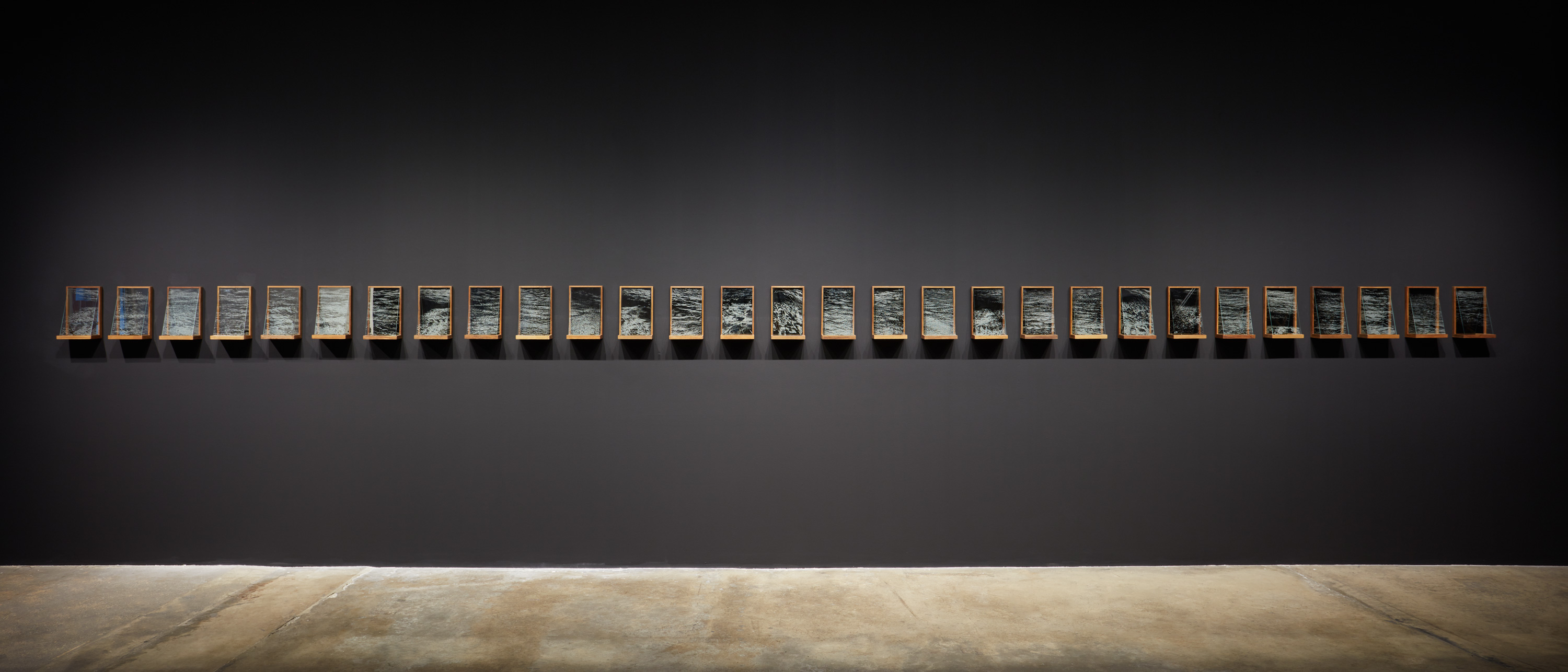
The Narrows
—
The Narrows
—
The Narrows refers to the thin stretch of water separating Brooklyn and Staten Island. Now connected by the Verrazano Bridge, this small waterway is one of the most significant gateways in American history. Between 1892 and 1954, over 12 million immigrants sailed through the Narrows to arrive at Ellis Island: the nation’s busiest immigrant inspection station of the time.
Language drawings engraved in glass and housed in teak form a row along the gallery’s length. The works number 29 as homage to the 29 questions that once formed the immigrant entry exam. The works are rooted in two key elements. First, the patterns directing the mark-makings’ flow originate in Scacco’s photographs of the water between Ellis Island and Manhattan. Second, the drawings’ textual contours begin with the firsthand account of an individual who entered through Ellis Island in the early 20th century, when immigration at Ellis was as its peak. Scaled intimately at twelve by seven inches, the proportions of the engravings echo the windows of the building. The mirrored structure causes each mark to multiply —mirroring history in the present, and continually underscoring the multiplicity, consistency and ongoing relevance of these stories. Upon reading and listening to hundreds of histories, one quickly finds more similarities than differences. These stories of hope, fear, separation, love and loss do not, and have not, changed.
Click on images below to view full screen.
Each piece: Glass, mirror, teak 12 x 7.9 x 4 in
The Narrows refers to the thin stretch of water separating Brooklyn and Staten Island. Now connected by the Verrazano Bridge, this small waterway is one of the most significant gateways in American history. Between 1892 and 1954, over 12 million immigrants sailed through the Narrows to arrive at Ellis Island: the nation’s busiest immigrant inspection station of the time.
Language drawings engraved in glass and housed in teak form a row along the gallery’s length. The works number 29 as homage to the 29 questions that once formed the immigrant entry exam. The works are rooted in two key elements. First, the patterns directing the mark-makings’ flow originate in Scacco’s photographs of the water between Ellis Island and Manhattan. Second, the drawings’ textual contours begin with the firsthand account of an individual who entered through Ellis Island in the early 20th century, when immigration at Ellis was as its peak. Scaled intimately at twelve by seven inches, the proportions of the engravings echo the windows of the building. The mirrored structure causes each mark to multiply —mirroring history in the present, and continually underscoring the multiplicity, consistency and ongoing relevance of these stories. Upon reading and listening to hundreds of histories, one quickly finds more similarities than differences. These stories of hope, fear, separation, love and loss do not, and have not, changed.
Click on images below to view full screen.
Each piece: Glass, mirror, teak 12 x 7.9 x 4in
